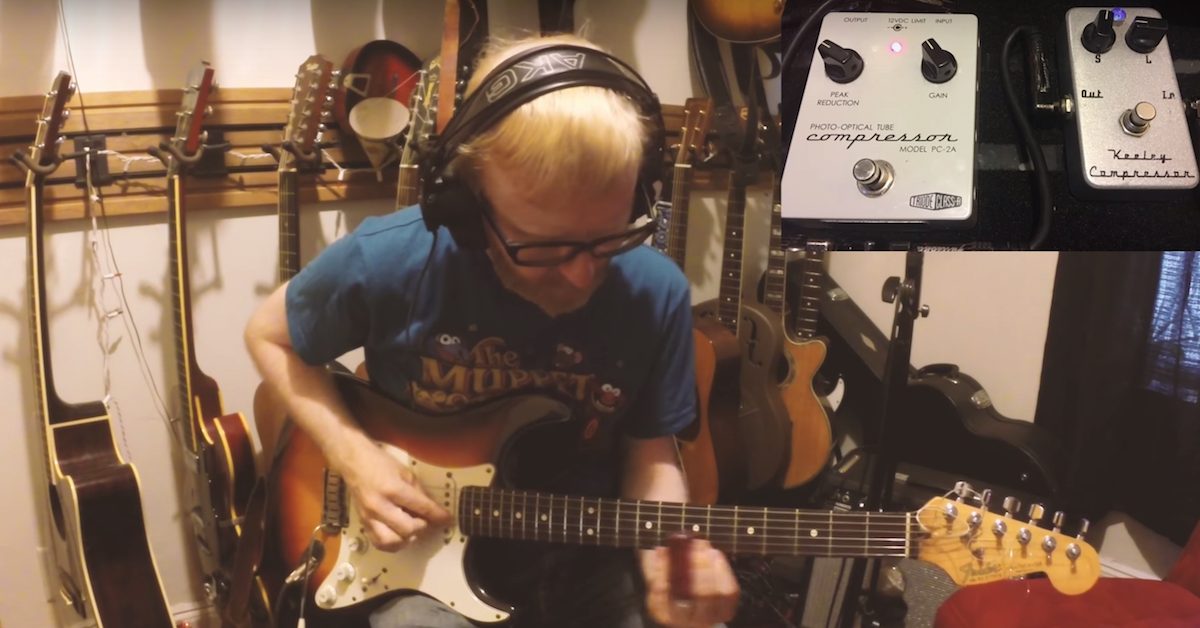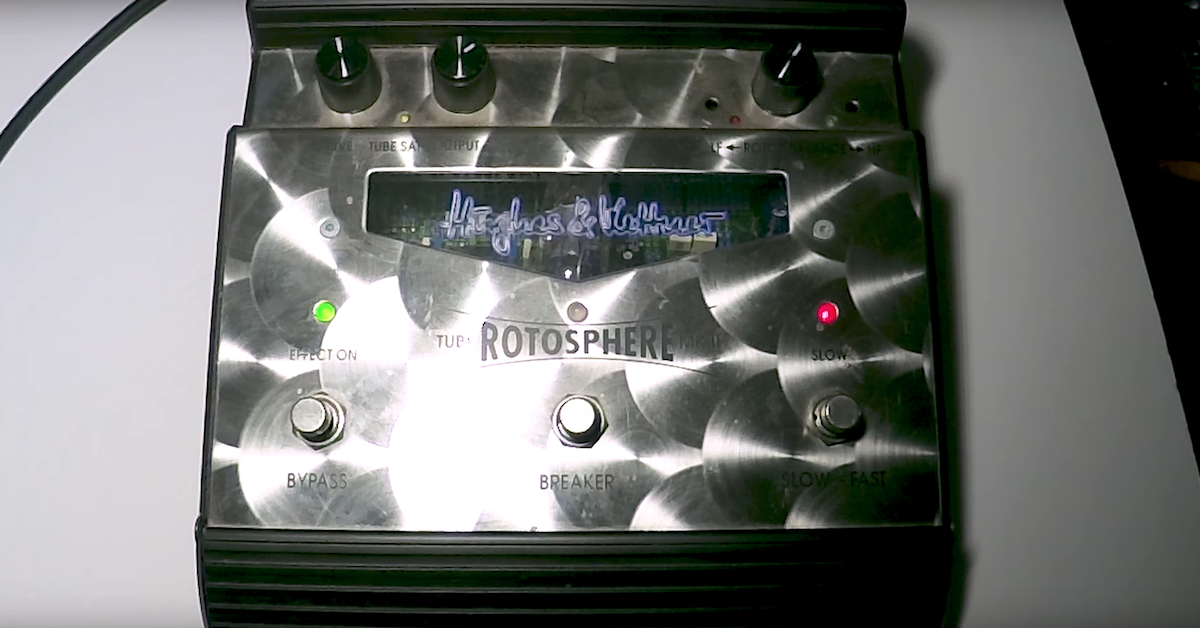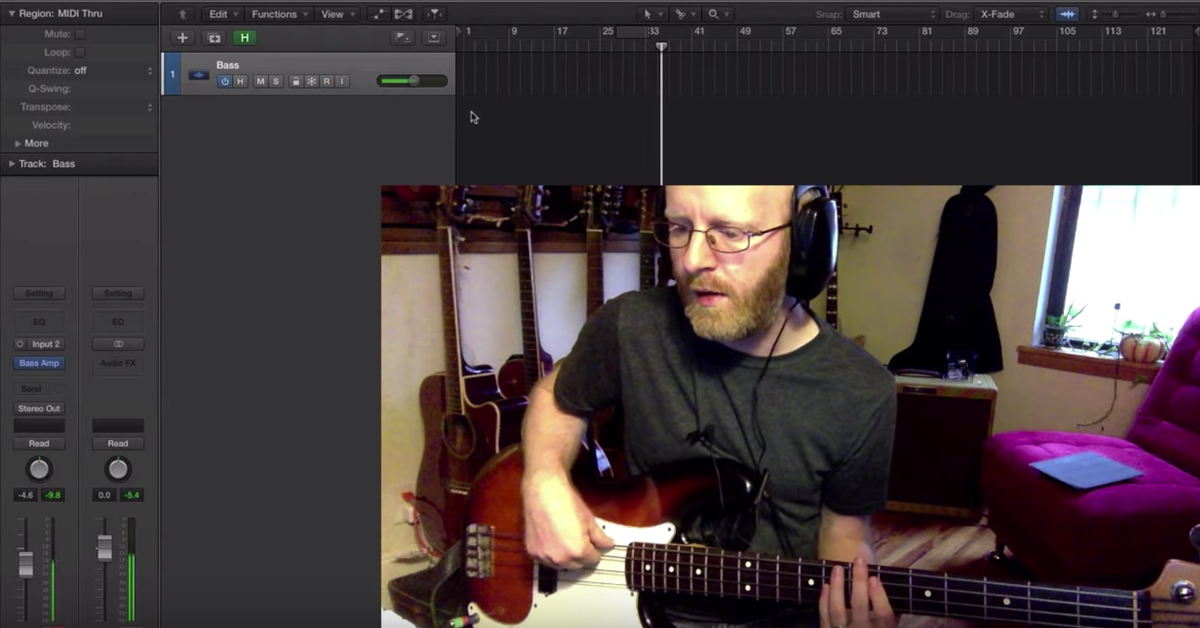How to Use a Guitar Slide to Emulate a String Section
Hey, everyone. Mark Marshall here from theproaudiofiles.com and guitaristmarkmarshall.com.
Today, I’m want to talk about using a guitar slide to emulate the sound of a string section. You can use any slide for this, but I’m using a custom made slide that gives me a few advantages, which I’ll explain in a few seconds.
One of the reasons I really like this technique is that it implies strings, but there’s something about the sound that just makes your brain wonder how it doesn’t sound 100% normal. I like using this for ambient music or also film soundtracks and stuff, and sometimes I prefer it over using VSTs and other plug-ins that have string libraries to it, because it takes a lot to program those sometimes, and with this I have quite a bit of control over my dynamics and expressions.
I’m using a slide made by Rocky Mountain Guitar Slides. This is a porcelain slide, and this is a custom job. What I had him do is glaze the slide in two areas, so that it’s nice and smooth like a traditional slide, but he left two areas uncoated for me; just raw. This is to emulate the sound of bone a little bit more, which is a little scratchier. I had him do this, knowing that I like to create ambient slide effects with the guitar that emulate a bow. The rough surface allows me to get the strings to resonate a little quicker and louder than a smooth slide would.
So, I’m going to show you a little bit of how I was getting the sounds that you were hearing. I have a track enabled here with a few plug-ins on it. I’m doing everything DI right now. I often prefer to do it through amps, but it was just simpler for this case. It sounds great even if you use DI.
First in the chain, I have a PSP MixPressor. This is just to get the sound a little bit louder and a little bit more contained, so if I slide it really hard, it’s not a peak in volume. It also brings up the quieter sounds. The thing about doing this technique, is it’s pretty quiet on the instrument itself.
From there, the MixPressor is going to run into Logic’s Amp Designer. I didn’t really do anything to this, except I probably turned up the gain, which I will typically do, even if I’m running through a real amp, just to try to get the amp working a little bit harder, so it compresses naturally on it’s own.
So, that’s the only thing I did with that one, and then I have the PSP Spring Box. It’s what I’m using to kind of get a little more of that ghostly sound, and make it sound a little more like a hall. I guess I could’ve used a hall reverb, but I’m really into the sound of this Spring Box, and it kind of adds to the unique flavor of this, and not being a 100% traditional string sound.
From there, I was using a guitar with round-wounds. Roundwounds work really great for this, because you can really scratch this against them more. I use flats often for slide guitar, because it’s a smoother sound, and you don’t hear the slide scratching against the strings so much, but for this, I kind of want the opposite.
You’ll notice that all the action is going to be in the left hand. So, if I’m playing a low note…
[guitar]
Now, I can move it as fast or slow as I want to emulate a bow.
[continues playing guitar]
That’s pretty much the basis of this technique. If you want to get a little bit more complicated, you could hook up a volume pedal, so that you could control the dynamics a little bit more, so you could get further into emulating the control that a violinist or a violist or a cellist would have.
Think of the string section you could make if you have a bass guitar, a baritone guitar, and a traditional guitar in your studio. You can really kind of spread those sounds out and treat it kind of like a mini-string section.
I want to talk a little bit about how easy it is to make it sound a little more like a string section. Let’s listen to it a little bit again.
[guitars, emulating string section]
It’s two parts. It’s just a high part and a low part. Now, I triple tracked each one. That’s one of the tricks with recording strings is just layering them to get a little bit of a fatter sound, and I did exactly this. But let’s separate them.
So, this is the low part.
[low guitar plays]
And here’s the high part.
[high guitar plays]
You get a little bit of wispy string noise in there, which is cool, I think.
You’ll notice that I took all the bass notes, and I sent them out to a buss where I put those plug-ins that we were talking about on, which was the compressor, the amp, and the reverb. This is just to conserve resources. I did the same thing for the treble.
You could take this a step further by not only adding a volume pedal, but also a delay. A delay can add a little bit more depth of field, and open things up with you creatively. Especially if you start playing with the feedback knob on that to change the width that the notes sustain.






